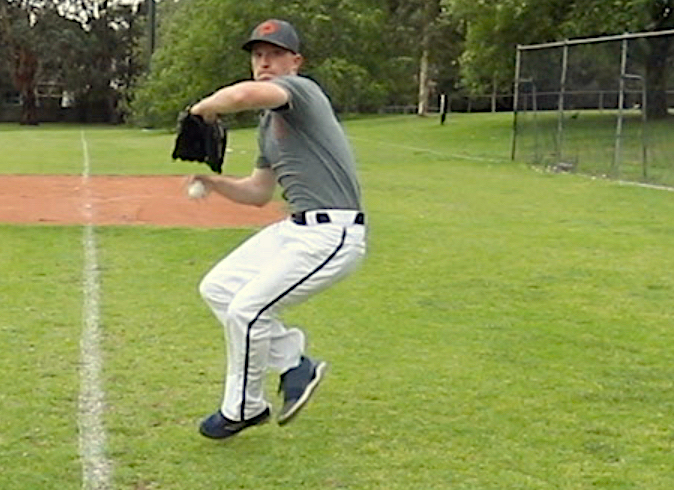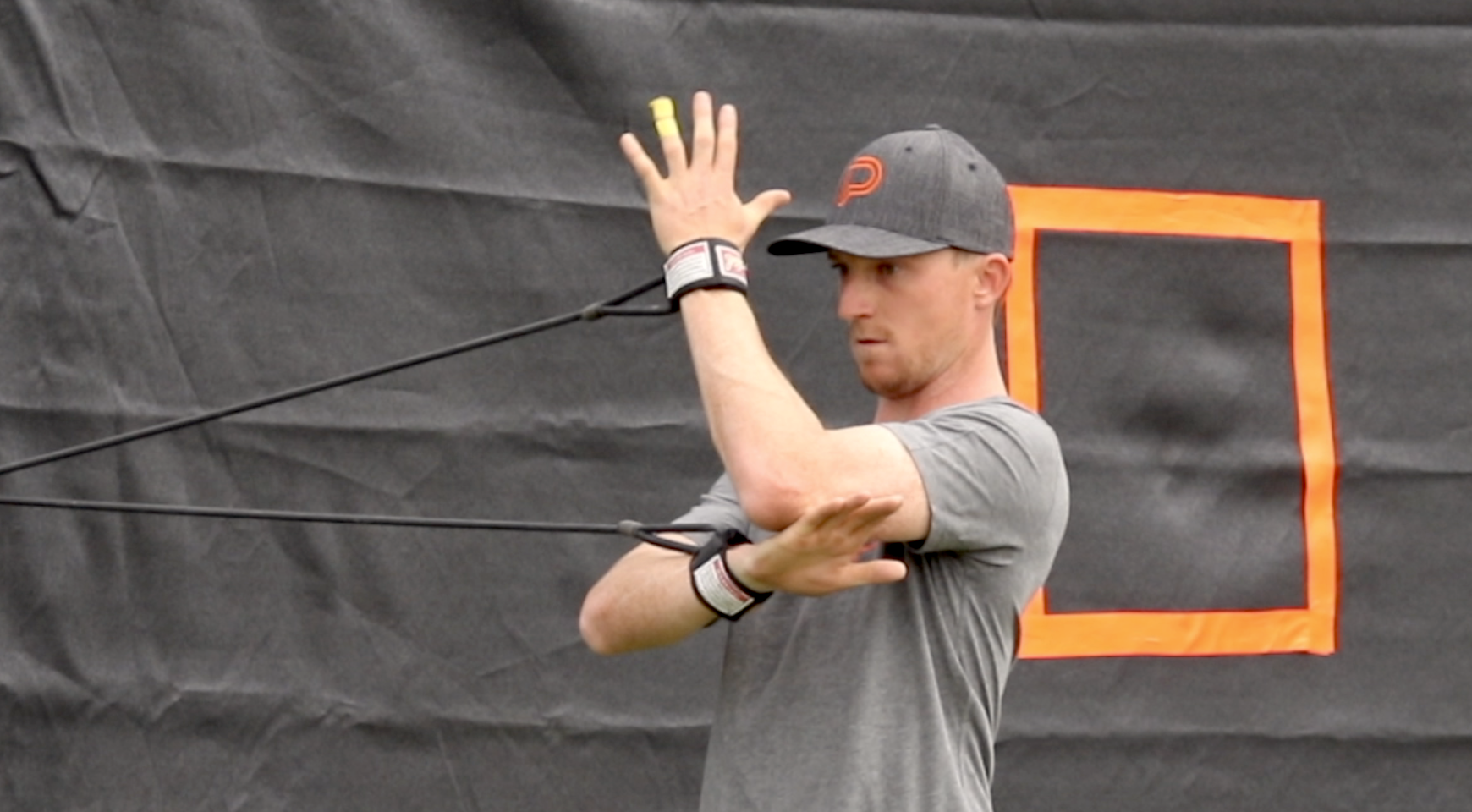Screening helps us to understand how people move. Is someone struggling to move because their joint is stiff? Or is it because they lack the control or strength to move properly? Understanding this enables the coach or therapist to either work on increasing joint range, or improving strength and control.
In some case’s where the range of movement cannot be improved, then the skill may need to be adapted to encompass the deficiency. The result of screening is being able to design a program that gets the balance of mobility, stability, strength and motor skill learning right rather than second guessing.
So what sort of things do we look at in a screening?
What is Kinesiology?
Kinesiology is the study of human movement. It looks at how the body moves and how it can best exert forces on objects. To be a great baseballer for instance you need to be really efficient in transferring force into a baseball in order to throw or hit it hard and accurately. Understanding how the body moves will help you to train and develop skills to perform better.
In developing and mastering new skills we are required to learn new ways to move efficiently. This can occasionally be difficult for a number of physical reasons.
Sometimes there may be a lack of movement in a joint because there is a mechanical block to the area eg. there is a tight muscle that prevents the joint from moving further.
Alternatively, it may be that the area in question cannot move because there is not enough stability to allow for the movement to occur eg. rotation cannot occur because there is not enough stability in the surrounding muscles to control the movement.
Or it may be that there is a motor learning issue and the skill needs to be repeated to create the new pattern and the person is comfortable in moving that way.
Knowing which reason is the issue helps coaches to train the athlete better and more efficientley.
Firstly let’s look at the type of movements that the body can do.
What types of Body Movements are there?
Each joint in the body can move in one or more movements. For example the elbow can flex and extend and rotate in the form of supination and pronation.
Flexion/ Extension – Bending and Straightening a joint
Abduction/ Adduction- Moving a joint away or towards the bodys midline
Rotation- turning around an axis
Circumduction – turning in a conical shape around an axis. It’s a combination of all movements
Inversion/Eversion- Turning of the sole of the foot in and out.
What are the Planes of the body?
Saggital– Moves the body fwds and back as well as up and down.
Coronal (Frontal) – Moves the body side to side as well as up and down.
Horizontal(Transverse) – Moves more in rotational direction but may involve up and down and a little side to side.
What is Mobility and Stability?
Baseball players must be able to create and control several different types of motion across nearly all the joints in the body. In order to do this there has to be a combination of Mobility and Stability.
Mobility relates to movement while stability relates to control.
Stability is defined as the ability to maintain control of a joint’s movement or position by coordinating the actions of surrounding tissues and the neuromuscular system.
Some players are “tight”. This means their soft tissues are stiffer and they may not be as flexible as others. These players generally have less mobility due to this stiffness, however they tend to be more stable.
Stiffness can be from muscles, joint capsule and ligaments or bony blocks.
Other players may be far more ‘loose”. These players are generally hypermobile and may have issues in controlling movements. Laxity can come from muscles, joints or previous activity and injury.
Being tight or loose can be both good and bad. Being too tight can mean that movements are sluggish or not enough power can be developed across a narrow band of movement.
However if movements are pure, and there is no power lost along the kinetic chain, tight athletes can develop a lot of power and spring.
Being too loose can lead to injury, and cause power to be washed out along the kinetic chain. However whippy actions can develop a lot of power and momentum when performed well.
One way or another it’s about creating a balance between strength, mobilty and control.
Essentially it’s a law of diminishing returns. Too much in either direction is not ideal. Finding the sweet spot for the athlete is important for maximal return. Understanding if you are a tight or loose mover can help you decide what is the best way to train. Screening helps us to work this out.
What is Neuromuscular Control?
Neuromuscular control relates to the ability of the nervous system to control a muscles activity and create controlled and purposeful movements. Through a system of motor learning and control the body learns how to perform a task time and time again in a consistent manner.
Motor Learning is the process of developing and mastering a movement process. Motor control is the complex process involving the contraction of muscles to make a coordinated movement. It involves muscles and nerves.
The purpose of breaking a skill down is often used in order to teach a greater movement. Feeding or starving the problem is a way that helps the brain to learn the correct patterns. Feeding the problem is where you accentuate the issue to make the body work harder to fix it. Starving the problem is where assistance is given to make the task easier to complete. Repetition of these movements help to imprint the process and make the movement automatic.
What is the Kinetic Chain?
A kinetic chain is where the joints have effect on each other and link together to create movement. Therefore each joint has an effect on another joint’s movements.
So how does this affect me?
That’s a lot of information to take into account.
Whilst you dont really need to know the finer details of Anatomy and Kinesiology, you do need to understand why you may be asked to do a certain drill or move in a certain way.
Pretty simply, in order to play baseball at a high level, you need to be able to move efficiently and powerfully.
Now not everyone is built in the same way and so not every players’ action is going to be the same. Big or small, tight or loose, movement can occur in many different forms. Look at how Mookie Betts moves compasred with Aaron Judge.
Throw in the periods of growth that youth athletes go through, which further complicate the issues of coordination and proprioception that need to be reprogrammed anbd you can imagine how hard it is to get a correct movement just right for you.
Therefore not everyone will benefit from the same exercise and drills. Individuals will be at different stages of physical development and therefore have different needs at different times. They will also have different body types again meaning different needs. A tall and skinny person will train differently from someone who is more compact.
What we do know is that Baseball is a power sport played in the sagittal or rotating plane.
Power is the ability to move forcefully quickly.
Therefore the ability to rotate powerfully is important for baseballers.
In order to do this you require a stable base to generate the power from, and then stability up the chain ie. hips, spine and shoulder to transfer the power to the bat/ball. Knowing where a players’ deficiencies in movement and power exist along this chain is why it’s important to have screening.
It is also recommended that rotation training is commneced early in life (12-14 years) as this will assist in maximising the potential of rotational gain patterns. Just like learning to walk we need to learn how to rotate. Even more important during these days of sitting down more and more.
Think of stretching and flicking a rubber band. It requires the ability to have a steady hand and the strength to pull it back and then let it go accurately to hit a target. Baseball is not different, it requires the ability to elongate the body and then use the generated power hit or throw the ball at a release point.
Dr Greg Rose from onBaseU discusses the importance of matching training types with the phases that an adolescant is transitioning through. ie) when someone is going through a growth phase, they should work at maximising strength training to utilise the growth hormones that are flushing through their system. As the phase settles down into growth consolidation they then transition to work on power to utilise the strength gained in the growth phase. Matching the athlete to their growth phase can be pretty complex as you can imagine.
So, you can see that being able to rotate fast is important, but how you do that depends upon your body type and the stage of life you are at. Helping you to understand the answers to these questions are why we screen.














